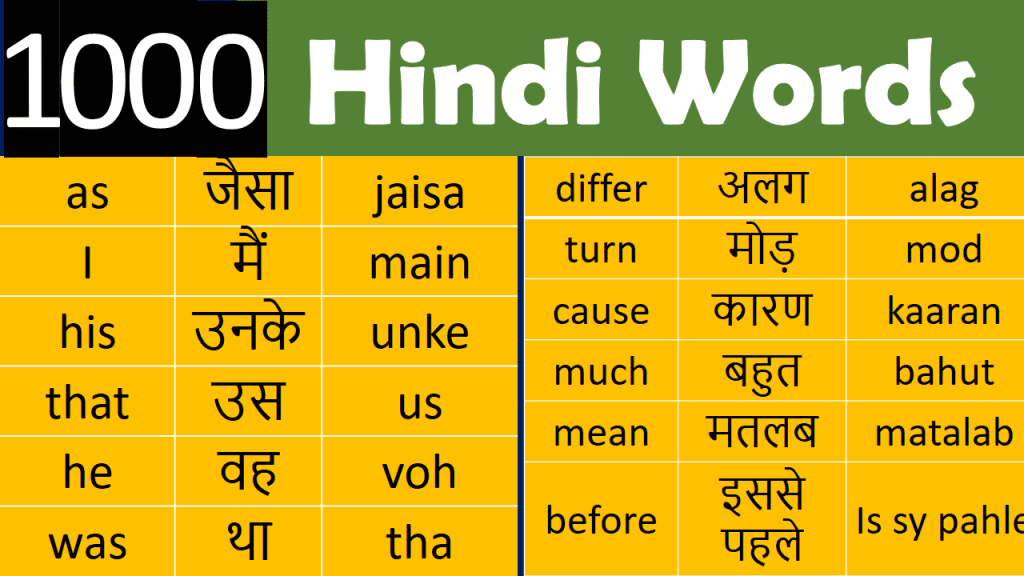- Hindi Verbs In English
- All Helping Verbs List With Hindi Meaning
- All Helping Verbs List And Hindi Meanings
- Common Hindi Verbs
- List Of Hindi Verbs
- All Helping Verbs List And Hindi Meaning
Helping verbs are verbs that help the main verb in a sentence by extending its meaning. They can also add detail to how time is conveyed in a sentence. As a result, helping verbs are used to create the most complicated verb tenses in English: the progressive and the perfect aspects. These verbs also function to convey complicated shades of meaning like expectation, permission, probability, potential, obligation, and direction.
English to Hindi Verbs list – Helping verbs. Helping verbs wo words hote hai jo sentence ke main verb ki help karte hai. Inhe English mein ‘Auxiliary verbs’ bhi kaha jata hai. Mainly 3 types ke helping verbs hote hai, jinke aage aur multiple forms hote hai. Helping verbs jane se pehle aiye 3 main helping verbs aur unke multiple forms jaan le. सीखो List OF Verbs - Regular and Irregular Verbs, Learn English in Hindi.English Advanced word List with Examples - Meaning.
Types of Helping Verbs
Helping verbs are important since they are needed to make up the structure of a sentence. They are used to help the main verb. There are two types of verbs that can be used as helping verbs in English: auxiliary and modal.
Auxiliary Verbs
Helping verbs that add meaning to the clause where they are being used are called auxiliary verbs (note that the terms helping verb and auxiliary verb are often interchangeable). They are used to express tense or to add emphasis. The three common auxiliary verbs have multiple forms:
- To be: am, is, are, was, were, be, been
- To have: have, has, had
- To do: do, does, did
Be, do, and have can be either standalone or auxiliary verbs. You can tell when these verbs are auxiliary if they are teamed with other verbs to complete the verb phrase. The following sentences are examples of auxiliary verbs:
- I am having another piece of pizza.
- She is making dinner for us now.
- I do not know the answer.
- I have been running for over an hour.
- She was given the grand prize.
Modal Verbs

Helping verbs that perform other specific tasks to further modify the action or meaning of the main verb are called modal verbs. Modal verbs do not change form. They are:
- can
- could
- may
- might
- will
- would
- shall
- should
- must
- ought to
Hindi Verbs In English

All Helping Verbs List With Hindi Meaning
Modal verbs help to show obligation, possibility or necessity in a sentence. The following sentences are examples of modal helping verbs:
- Sal can name all the US presidents.
- You should go home and lie down.
- When it's your time, you must go.
- I may be late for the meeting.
- Would you mind if I stayed here for a while?

Progressive and Perfect Aspects
Different helping verbs are used for different purposes in sentences. One of the auxiliary verb's main functions is to situate the action of a sentence in a particular aspect of time. The two main aspects that auxiliary verbs play a role in are the progressive aspect and the perfect aspect.
Using the Progressive Aspect
When the main verb in a sentence ends in -ing, the progressive aspect is often being used. This aspect is used to convey the notion that an action is occurring in an ongoing fashion.
The forms of the helping verb to be (am, is, are, was, and were) are used to create this aspect:
- I am renting my guest house to my neighbor.
- Steve is starting a new personal training business.
- Christopher and Bernadette are moving to Baton Rouge.
- It was raining when we got to Portland.
- The presidential candidates were debating in Philadelphia.
Using Perfect Aspects
There are three different forms of the perfect aspect in English: past perfect, present perfect, and future perfect. The perfect aspect is used to explain an action that is/was/will be in a state of progress and is/was/will be completed before a particular time. The perfect aspect can also be used in the continuous form to show actions that are ongoing.
Forms of the verb to have and to do are often used to create the various perfect aspects.
The perfect aspect is subdivided into:
- past perfect
- present perfect
- future perfect
The following sentences demonstrate how helping verbs are used to create these aspects:
- She had stolen the car already by then. (past perfect)
- I had been dreaming about you when you called. (past perfect continuous)
- What will we do now that Barbara is gone? (future perfect)
- Jennifer won't be going to the dinner. (future perfect)
- Dave has been working on the task all day. (present perfect continuous)
- Have you worked here long? (present perfect)
All Helping Verbs List And Hindi Meanings
Important Final Rule
Common Hindi Verbs
One important rule to keep in mind is that the verb phrase in a sentence should not include more than three helping verbs.
List Of Hindi Verbs
When used properly, helping verbs perform some of the most intricate work in English verb phrases. The more complex aspects, progressive and perfect, should be approached by writers who already have an advanced understanding of English sentence structure.
All Helping Verbs List And Hindi Meaning
For second language learners, helping verbs can pose particular problems and should therefore be studied after a solid foundation of simple verbs has been achieved.